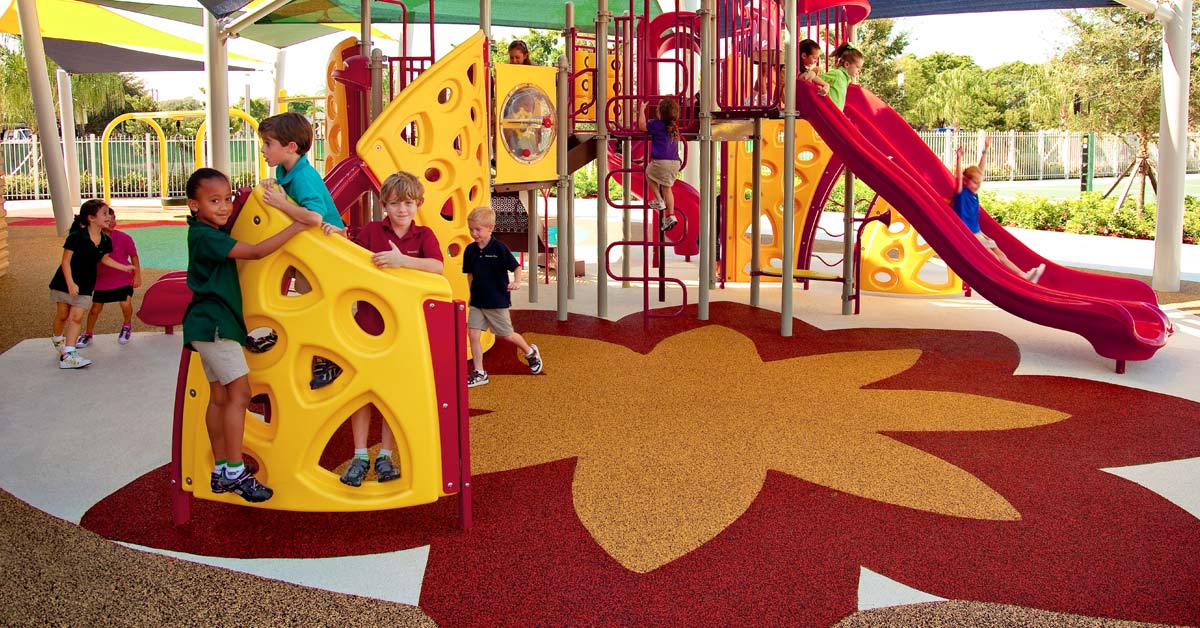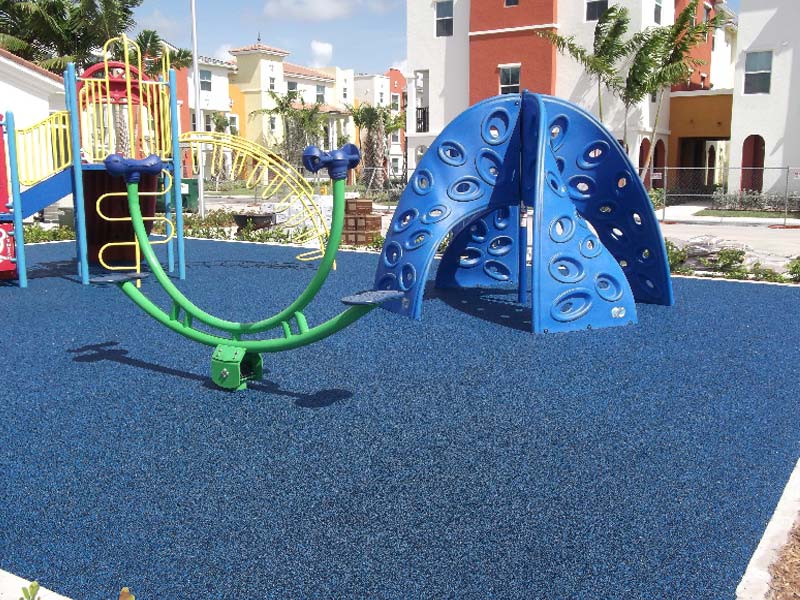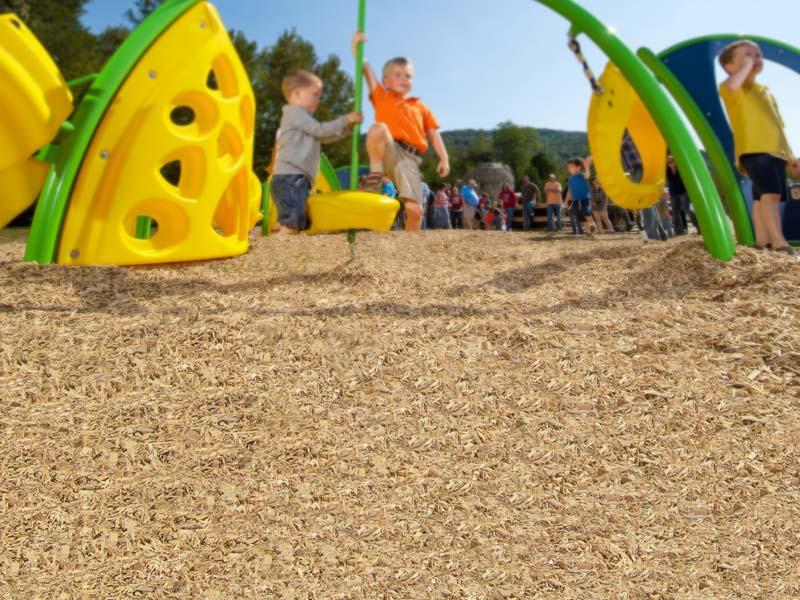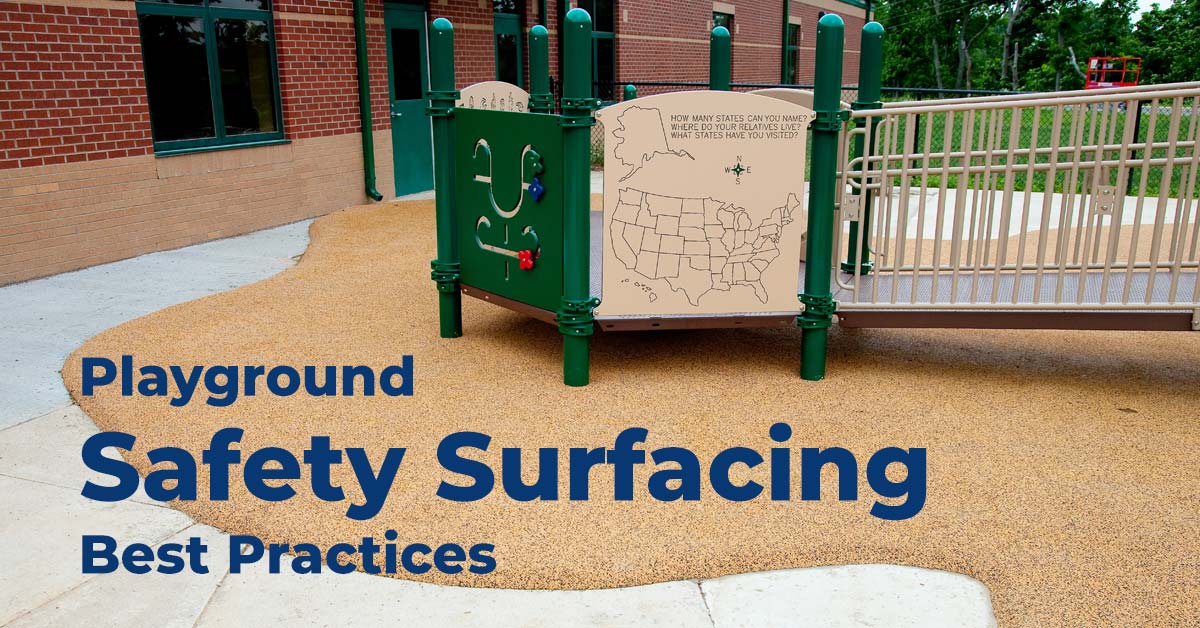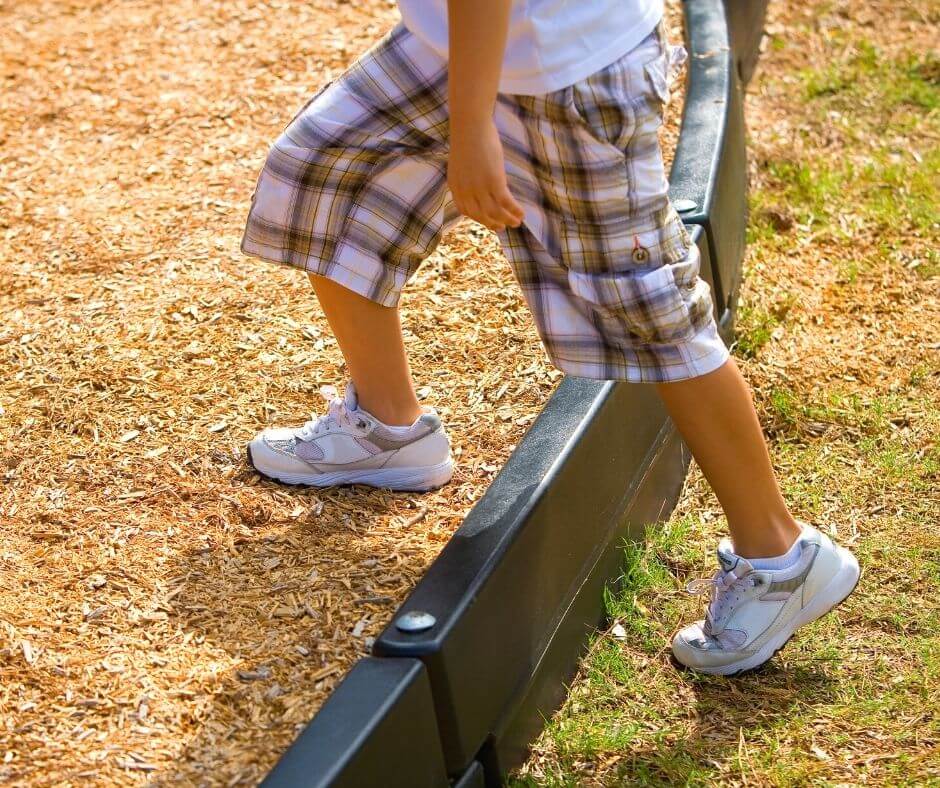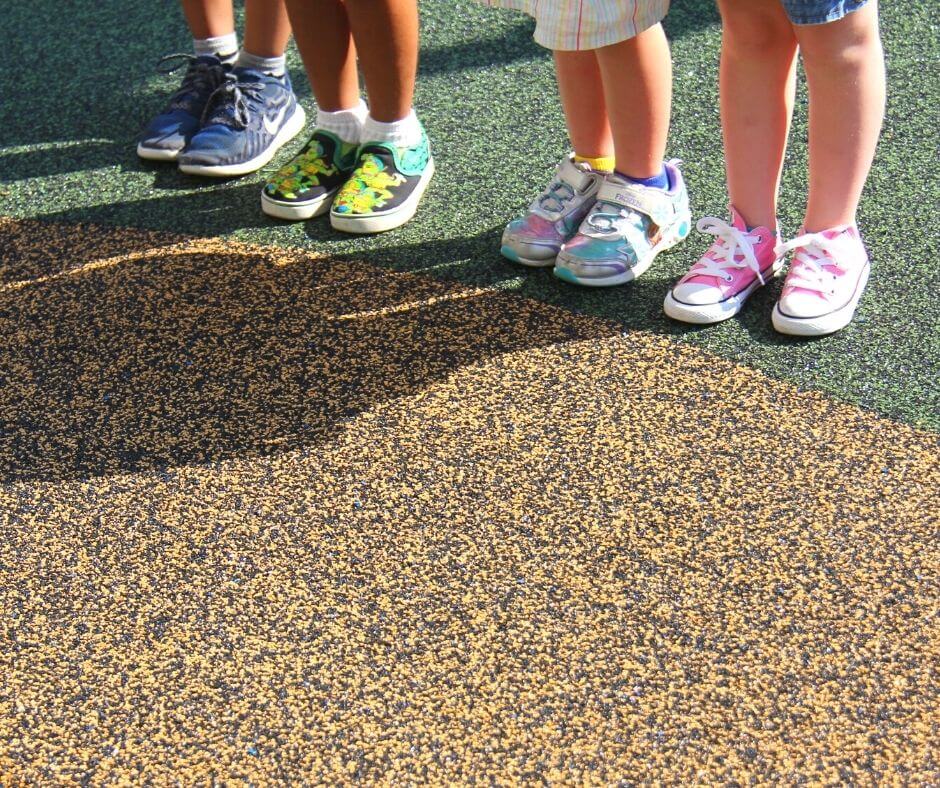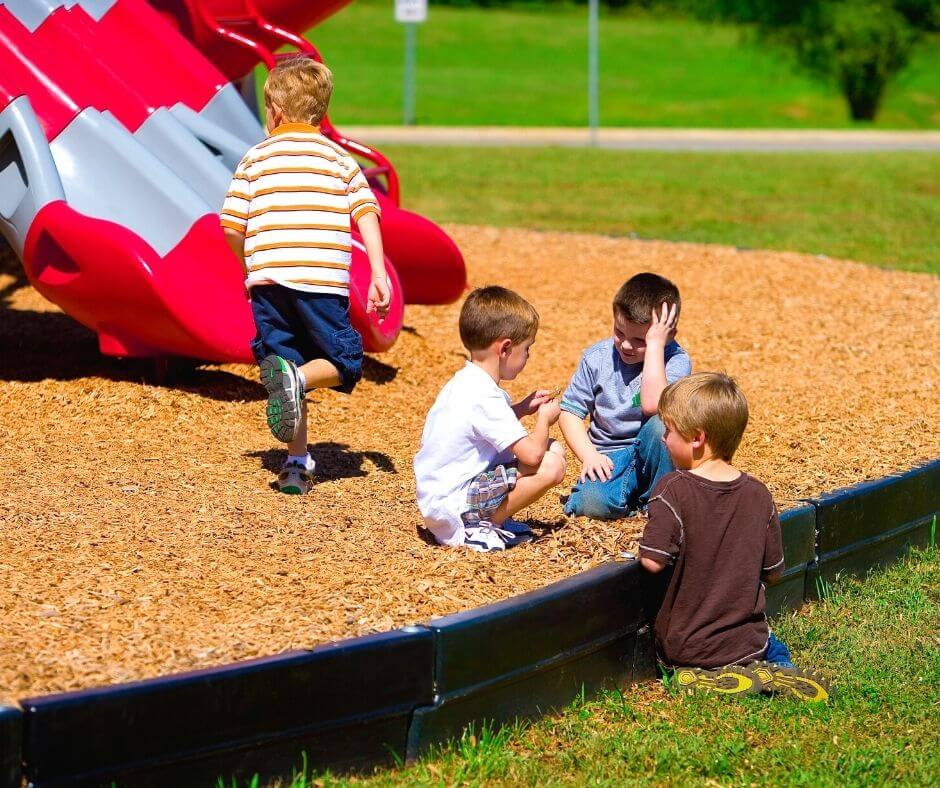Playground surfacing is one of the most important parts of a play space. Why? Because when kids fall they can get scrapes, cuts, bruises and, in serious cases, broken bones. However, with the right surface, you can help reduce the amount of damage done to a child who falls on the playground.
Playground Surfacing Types
All playground surfacing has a percentage of shock absorbency, some more than others. For example, concrete has a very poor ability to absorb shock waves from children who fall, resulting in more intense injuries. In contrast, rubber and wooden mulch have very high shock absorbency abilities. As a result, children who fall suffer less damage because most of the impact is absorbed into the surface.
Rubber Mulch
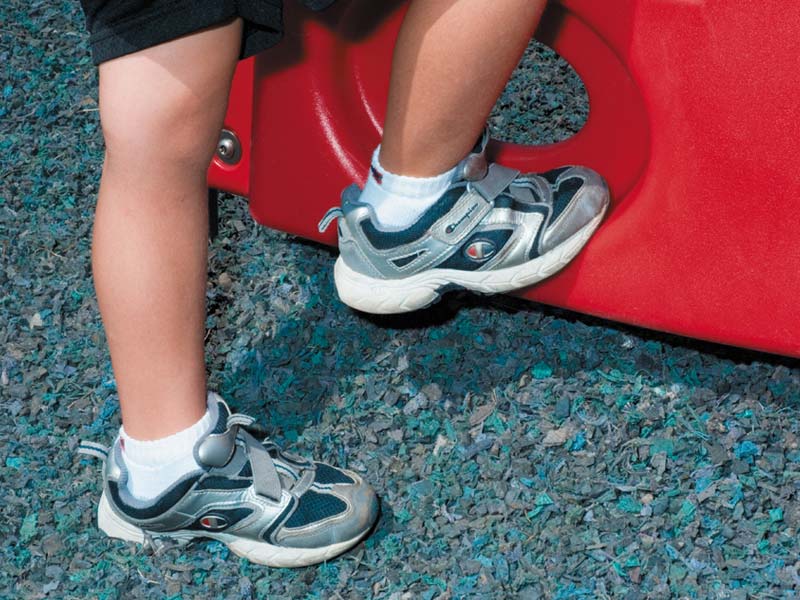
Rubber mulch is made of shredded recycled rubber that will not freeze in the winter, absorb water, or sustain the growth of mold or fungus. Also, it does not attract bugs or emit odors and requires little maintenance over time.
Rubber mulch exceeds all of the safety requirements put in place by the ASTM, IPEMA and CPSC organizations and is ADA accessible. Finally, this surface is a great shock absorbent because of its material. Rubber has a large elasticity component, which allows it to compress when fallen on and spring back. This lessens a child’s fall because when the surface material is compressed it absorbs the impact.
Wood Mulch
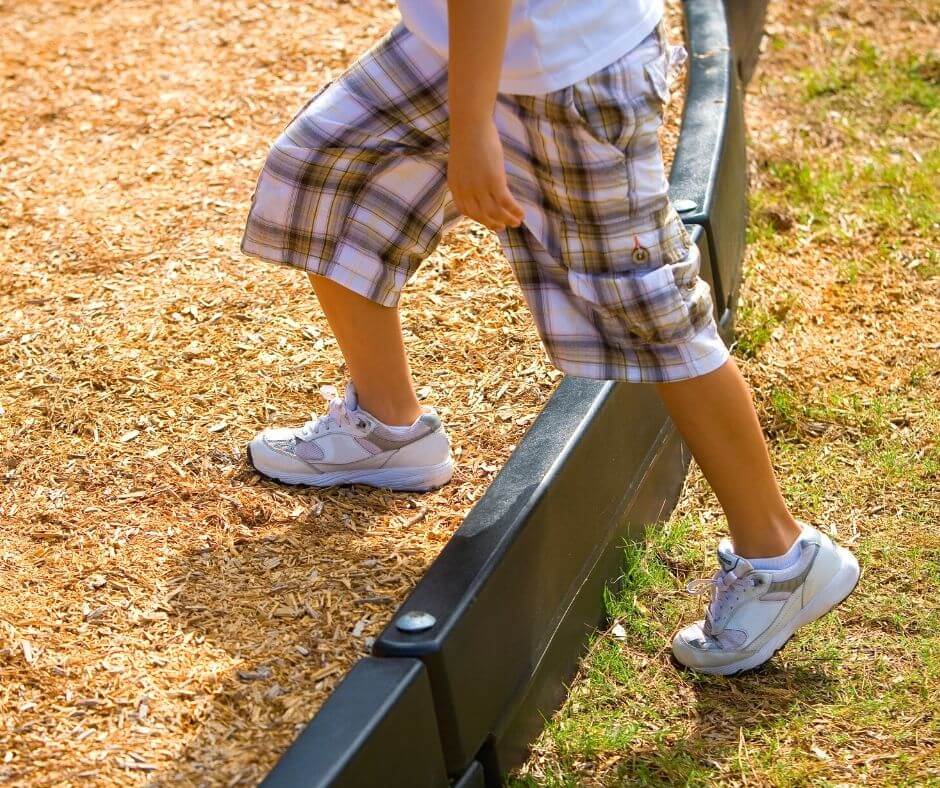
Much like rubber mulch, wooden mulch is also a fantastic shock absorbent. Wooden mulch is composed of 100 percent natural fibers and does not contain any chemicals or artificial components. This mulch is not the same as your garden mulch though. Garden mulch is usually dyed different colors for an aesthetic appeal and can be treated with chemicals to repel pests. This type of mulch is not compressed, leaving splinters that can injure children or adults. Playground mulch has been specifically engineered for playground purposes, meaning that there are no splinters or shreds of mulch that children can injure themselves on and there are no artificial dyes that can harm children’s health. Playground wooden mulch meets all of the ADA, ASTM and CPSC surfacing standards and id environmentally safe.
Among rubber and wooden mulch, rubber tiles, pour-in-place surfaces and sand are also great shock absorbents. Some of these surfaces must have a base surface made of crushed gravel or concrete to maximize the surface’s ability to absorb shock from an impact. Concrete and crushed gravel are poor absorbents, as mention earlier, but by having these materials as a base surface, they level out the ground and provide a slight elevation for proper drainage. This allows the top surface to lay flat and become a better shock absorbent.
Learn More About Playground Surfacing
To learn more about the shock absorbency of different surfaces please review our previous blog posts:
- Rubber Playground Surfacing: Rubber Tiles vs. Poured in Place
- Safety Surfacing Details You May Not Know About
- Playground Safety Measures to Implement at Your Organization
We can refer you to our National Playground Construction Company to schedule an inspection of your playground surface and play structures. If you would like to inspect your playground yourself, please use the safety checklist provided by the United States CPSC organization.
If you have any questions or concerns about your playground surface, please feel free to give BYO Recreation a call at

